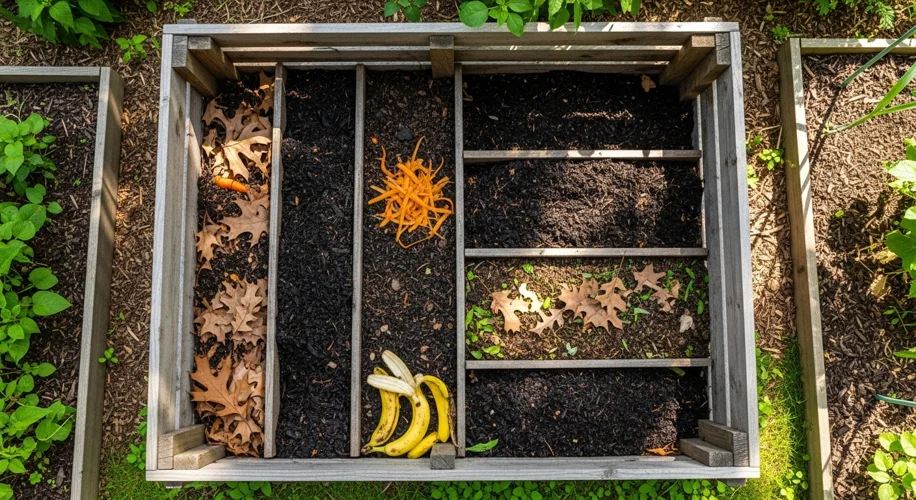You know, I love getting my hands dirty in the garden. It’s amazing what you can grow when you give the soil a little love. And one of the best ways I’ve found to do that is by composting.
Many of us think of composting as just tossing food scraps somewhere out of sight. But it’s really a science, and a pretty neat one at that. Composting is essentially nature’s way of recycling. It’s a process where organic materials like kitchen scraps and yard waste break down naturally, turning into a nutrient-rich soil amendment called humus.
Why bother? Well, this ‘garden gold’ is fantastic for your plants. It improves soil structure, helps retain moisture (meaning less watering!), and provides essential nutrients that help your vegetables and flowers thrive. Plus, it diverts waste from landfills, which is always a good thing.
So, how do you get started? It’s simpler than you might think.
What You Can Compost:
- Greens (Nitrogen-rich): Fruit and vegetable scraps, coffee grounds and filters, tea bags, grass clippings, and plant trimmings.
- Browns (Carbon-rich): Dried leaves, straw, shredded newspaper (avoid glossy paper), cardboard, twigs, and sawdust.
What to Avoid:
- Meat, fish, and dairy products (can attract pests and create odors)
- Oils, fats, and greasy foods
- Diseased plants
- Weeds that have gone to seed
- Pet waste
The Basic Method: Layering is Key
Think of it like building a lasagna. You want a good mix of greens and browns. A common ratio to aim for is about two to three parts browns to one part greens. This balance helps the compost pile ‘breathe’ and break down efficiently.
- Start with a layer of browns: Twigs or straw at the bottom help with aeration.
- Add your greens: Kitchen scraps, coffee grounds, etc.
- Cover with browns: Leaves, shredded paper.
- Repeat: Keep layering.
Keeping it Working:
Your compost pile needs a few things to stay active:
- Moisture: It should be damp like a wrung-out sponge, not soggy or dry. If it gets dry, add some water. If it’s too wet, add more browns.
- Air: Turning the pile occasionally with a pitchfork or compost aerator helps introduce oxygen, speeding up the process and preventing that unpleasant smell.
How Long Does it Take?
It varies! With regular turning and the right mix of materials, you can have finished compost in as little as 2-3 months. If you’re more hands-off, it might take 6 months to a year. You’ll know it’s ready when it looks dark brown, crumbly, and smells earthy – like the forest floor after rain.
Composting is a journey, and the best part is seeing your efforts literally turn into something that nourishes your garden. It’s a rewarding practice that connects you back to the natural cycle. Give it a try, and you might be surprised at how much goodness you can create right in your own backyard!

